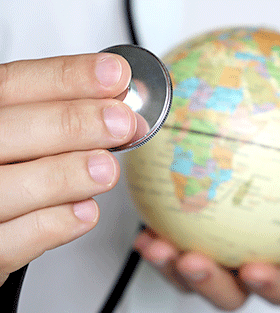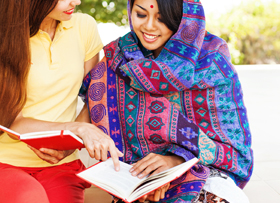
International ODA Trends
Countries’ ODA trends are introduced.
Size and strategies of each country are constantly compared and analyzed.
HOME  International ODA Trends
International ODA Trends  Korea
Korea
Korea
Since the entry into OECD / DAC in 2010,
Korea has enacted the Basic Law on International Development
Cooperation to improve policy coherence and aid effectiveness
and has continuously increased ODA to contribute to the
development of developing countries.
The amount of ODA support (based on net expenditure) in 2017 decreased
by 2% from the previous year to US $2.21 billion due to the decrease in contribution
to multilateral institutions. However, the amount of bilateral assistance continued to increase.
We are trying to implement it. The ratio of ODA to GNI in Korea is 0.14% in 2017,
making it the 15th place among the 29 DAC members (16th place in 2016) and achieving the
ODA / GNI ratio target of 0.20% by 2020 We are continuously striving to achieve our goals
by continually expanding ODA.
Korea's ODA Strategy for the Korea International Cooperation Agency (KOICA)
The Korea International Cooperation Agency (KOICA), through its partnership with variousgovernment, public institutions, NGOs, corporations, and academia, participating in international development cooperation, is striving to enhance the effectiveness of development cooperation projects. These efforts are in line with the Inclusive Partnership, which is one of the main results of the Busan World Development Assistance Conference held in Busan in 2011. KOICA hopes to be reborn as a truly ODA platform by providing diverse business participation paths to stakeholders Interested in participating in international development cooperation. These development cooperation platforms will meet the needs of suppliers and consumers through networks among each subject, thereby creating a development cooperation ecosystem capable of self-innovation and enhancing the value of development cooperation.
Health is a fundamental right of all human beings and a prerequisite for economic and social development in developing countries. KOICA has established a Medium-Term Health Strategy (2016- 2020) to provide quality health care services to the people of developing countries and to make efforts to improve universal health. The Sudan Sudanese Anti-Fumigation Secondary Project is a representative example of the success of KOICA's direction.

-
The 2nd Sudan Schistosomiasis Elimination Initiative in collaboration with KOICA (SSEIIK)
(2008-2014, 280 million dollars)The damage caused by schistosomiasis in Sudan is a severe problem after malaria. Neglected Tropical Disease (NTD) caused by schistosomiasis has been difficult to carry out due to lack of budget. In 2008, the Sudanese government requested KOICA to support the project for the prevention of schistosomiasis, and as a result of primary support from KOICA in 2009 to 2011, the rate of S. lupus infection in the target area was significantly lowered from 28.5% to 13%. The Sudanese government requested KOICA to support the second project to strengthen the business sustainability and management policy capacity. KOICA has conducted a second project in Al Zabaran and El-Salam area in White Nile to enhance the capacity of Sudanese parasite management policies and institutions. In this project, we provided support for drinking water supply facilities, prevention of schizophrenia, improvement of parasite diagnosis and treatment system. This contributed to the reduction of illnesses and mortality of the vulnerable groups in charge of water in the home, such as children, adolescents, and women in the area, and by concentrating on health education campaigns such as diagnosis and medication of schistosomiasis focusing on elementary school.
Introduction of Korean Girl Health Project
In the international society, there is a greater consensus that 'achievement of gender equality' is not only an improvement of women's status, but also an essential element for achieving universal development cooperation goals. In line with these international trends, KOICA has established the "Gender Equality Mid-term Strategy (2016-2020)" to respond to new global trends such as SDGs and to contribute to achieving gender equality in developing countries.

-
Ghana UNICEF Women's Youth Rights and Education and Health Promotion Project
(2017-2020)Content :
Expansion of toolkit for child and youth protection, technical training for out-of-school youth, MHM implementation and creation of best practices, improvement of secondary school mathematics science achievement, etc.Purpose :
To eliminate the risks and vulnerabilities faced by women and youth, to carry out activities that will help solve the problems of early marriage and teenage pregnancy, and to develop data and methods for evidence-based policy formulation and implementation.

-
Nepal UNESCO 'Girls and Women's Competency Enhancement Project'
('16 - '20 / 5.15 Million Dollars)Contents :
Through the primary education and sexual health education, the aim is to ensure that women's young people receive a fair and equitable education and health rights.Purpose :
Improve quality of life through improving access to qualitative education for girls and women in Nepal, promote human rights through institutionalization of sex education in Nepal public education, achieve gender equality, build a foundation for sustainable development



